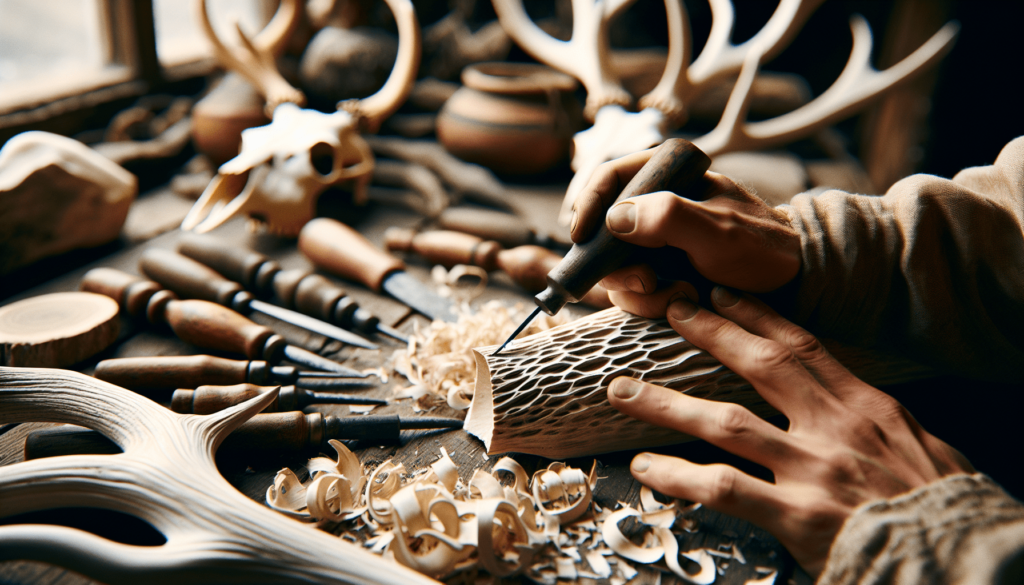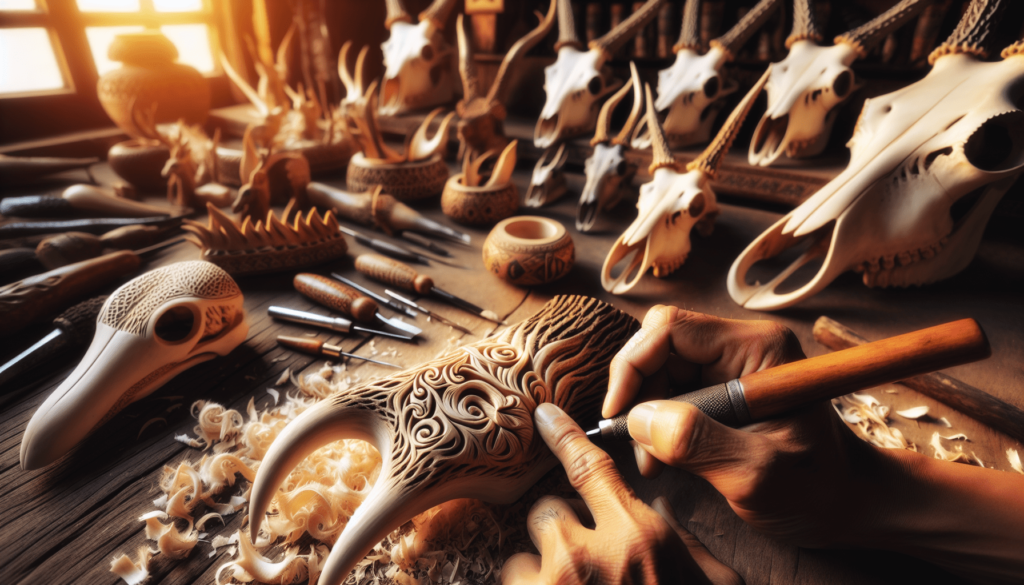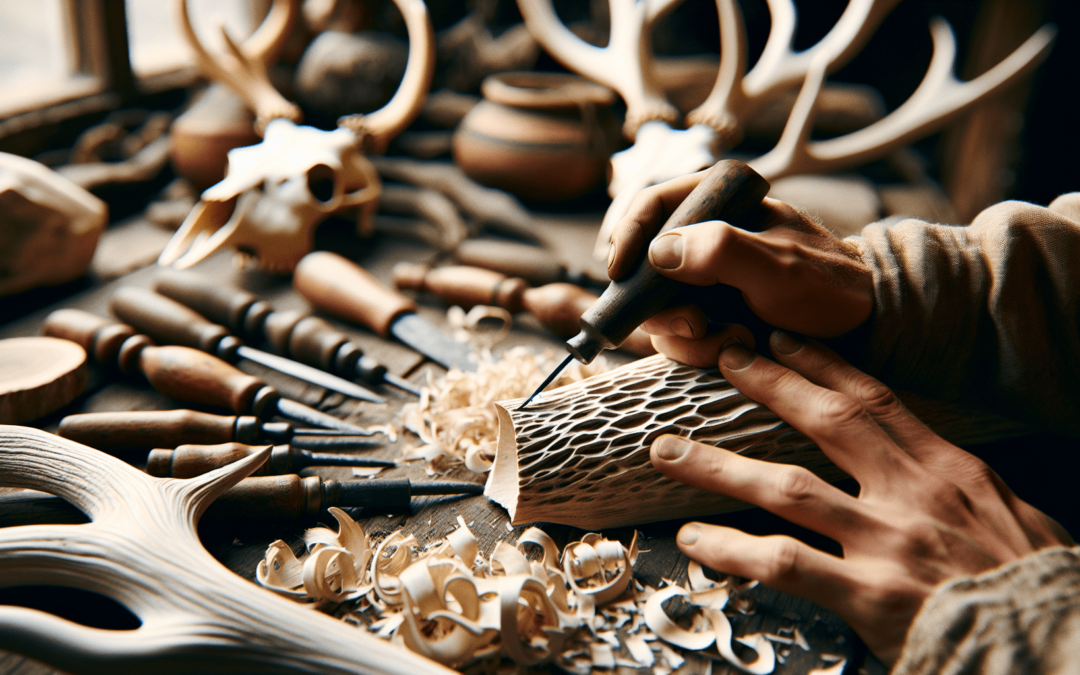In “Using Bones And Antlers For Tools And Crafts,” you’ll uncover the age-old tradition of transforming natural remnants like bones and antlers into functional tools and captivating crafts. This article delves into various techniques and creative projects, guiding you through the steps to turn these organic materials into unique and practical items. Whether you’re looking to embrace sustainable practices, explore historic methods, or simply add a rustic touch to your crafting repertoire, this article offers a wealth of inspiration and knowledge to get you started. Have you ever wondered how ancient cultures managed to craft their tools and art? These days, we have metal, plastic, and synthetic materials readily available, but long before these were invented, our ancestors were using bones and antlers to make everything from weapons to jewelry. Exploring this practice is not only fascinating but can also serve as a creative and sustainable alternative today.
Understanding The Source: Bones and Antlers
Let’s start by understanding what bones and antlers actually are and where they come from. Knowing this can help you appreciate their unique properties.
What Are Bones?
Bones are rigid organs that constitute part of the vertebrate skeleton. They are primarily made of calcium phosphate and collagen, which make them both strong and resilient. You can get bones from animals like cows, deer, and even fish, each type having its own set of characteristics.
What Are Antlers?
Antlers are extensions of the skull found in members of the deer family. They are made of bone and are usually shed and regrown annually. Unlike horns which are permanent, antlers are renewable resources, making their use both fascinating and sustainable.
Historical Context: Why Use Bones and Antlers?
Turn back the clock, and you’ll find that bones and antlers were essential to the survival of various cultures around the world.
Prehistoric Times
In prehistoric times, early humans relied heavily on bones and antlers for their durability and availability. Tools made from these materials were crucial for hunting, cooking, and even in creating art.
Native American Cultures
Native Americans were masters of using natural resources efficiently. Bones and antlers were often transformed into everything from combs and needles to fish hooks and weapons. This resourcefulness ensured nothing was wasted, and every part of the animal was respected and used.
Viking Era
The Vikings utilized bones and antlers for daily life as well. Weapons, utensils, and even gaming pieces were commonly made from these materials. They understood the strength and versatility these resources offered.

Tools You Can Make from Bones and Antlers
Curious about what you can create? Here are some common tools made from bones and antlers, which you can attempt to make yourself!
Knives and Blades
Bones and antlers can be sharpened to make durable blades. These tools were used for hunting, preparing food, and even in combat. While making a bone knife can be challenging, the results are worth it.
Needles and Awls
Flawless needles and poking tools called awls were commonly made from the finer bones and antler tips. These tools were essential for sewing and crafting leather goods.
Fish Hooks
Bone fish hooks were widely used across different cultures. They were durable, effective, and relatively easy to make.
| Tool | Primary Material | Uses | Remarks |
|---|---|---|---|
| Knife/Blade | Bone/Antler | Hunting, Cooking, Combat | Durable, Sharp |
| Needle/Awl | Bone/Antler | Sewing, Leatherworking | Fine, Pointed |
| Fish Hook | Bone | Fishing | Easy to make, Effective |
Crafts You Can Make from Bones and Antlers
Apart from functional tools, bones and antlers have been used extensively in art and craft.
Jewelry
Bone and antler jewelry has been popular for centuries. Earrings, necklaces, and bracelets crafted from these materials can be intricately designed.
Carvings
Antler carvings are especially popular due to the material’s workability. From intricate figurines to beautiful motifs, the possibilities are endless.
Buttons and Fasteners
Even the smallest of bone fragments can be turned into useful items like buttons and fasteners.

Techniques for Working with Bones and Antlers
Okay, you’re probably excited to start, but how do you actually work with bones and antlers? Here are some basic techniques to get you going.
Cleaning and Preparing
Before you can use bones and antlers, they must be cleaned and prepped. This usually involves soaking them in a mixture of water and hydrogen peroxide to remove any remaining organic matter.
Cutting
Cutting bones and antlers requires the right tools. A hacksaw or Dremel tool works well, but ensure you cut slowly to avoid splintering.
Shaping
Once cut, bones and antlers can be shaped using files, rasps, and sandpaper. Take your time to achieve the desired shape and smooth finish.
Polishing
Polishing gives your piece a finished look. A bit of sandpaper, followed by a polish with a soft cloth and some oil, can bring out a lovely sheen.
Sustainability and Ethics
Using bones and antlers is sustainable, but it’s important to consider ethical sourcing. Let’s explore how you can ensure that your materials are responsibly obtained.
Ethical Sourcing
Look for sources that collect fallen antlers or use bones from animals that were already harvested for meat. Avoid using materials from endangered species or animals killed for their bones.
Environmental Impact
Using natural materials like bones and antlers can have a lower environmental impact compared to synthetic options. It encourages the reuse of materials that might otherwise go to waste.
Modern Applications of Bones and Antlers
You might think this is all ancient history, but bones and antlers have plenty of modern-day applications that blend tradition with innovation.
Fashion Industry
Many designers incorporate bone and antler elements into their work, ranging from jewelry to embellishments on clothing.
Home Décor
Items like antler chandeliers and bone-inlay furniture have found a niche in modern home décor. They add a rustic yet refined feel to any space.
Art and Sculpture
Modern artists continue to use bones and antlers for their sculptures and art pieces, often blending them with other materials to create unique works.
Getting Started: A Beginner’s Guide
Ready to dive into working with bones and antlers? Here’s a simple guide for beginners.
Gather Your Materials
First things first, gather your materials. Look for ethically sourced bones and antlers. You’ll also need some basic tools like a hacksaw, files, sandpaper, and a polishing cloth.
Simple Projects to Start
Start with a simple project like a bone needle or a small carving. This will help you get a feel for the material and tools.
Safety First
Working with bones and antlers can produce dust and small fragments, so always wear safety goggles and a mask. Work in a well-ventilated area and keep your workspace clean.
Step-by-Step: Making a Bone Needle
- Choose a Bone: Pick a thin, straight bone.
- Cleaning: Soak the bone in a water and hydrogen peroxide mixture for 24 hours.
- Cutting: Use a hacksaw to cut the bone to the desired length.
- Shaping: Shape one end into a point using a file.
- Drilling the Eye: Carefully drill a small hole at the other end.
- Polishing: Smooth and polish your needle until it has a nice finish.
Advanced Techniques and Projects
Once you’ve got the hang of basic projects, it’s time to challenge yourself with more advanced techniques and creations.
Inlay and Engraving
Add an extra layer of detail by learning inlay and engraving techniques. These can be used to add decorative elements to your pieces.
Composite Works
Try combining bones and antlers with other materials like wood or metal to create composite works. This can open up new possibilities for designs and functions.
Life-Sized Sculptures
For the truly ambitious, creating life-sized sculptures using bones and antlers can be incredibly rewarding. This requires more extensive planning and a range of advanced skills.
The Cultural Significance of Bone and Antler Crafts
Diving into bone and antler crafting is not just about the end product; it’s also about connecting with a long history of human ingenuity and resourcefulness.
Symbolism
In many cultures, bones and antlers carry significant symbolism. They are often seen as representing strength, life, and survival.
Spirituality
Various Native American tribes view antlers as symbols of spiritual authority and wisdom. They are frequently used in rituals and ceremonies.
Community and Storytelling
In ancient times, crafting with bones and antlers was a communal activity. It was a way to share skills, tell stories, and pass down traditions from one generation to the next.
Resources for Learning More
Interested in diving deeper? Here are some resources that can help you expand your knowledge and skills.
Books
- “Primitive Technology: A Book of Earth Skills” by David Wescott
- “Bone Carving: A Skillbase of Techniques and Concepts” by Stephen Myhre
Online Communities
Join forums and social media groups dedicated to bone and antler crafts. These communities can provide invaluable advice, feedback, and inspiration.
Workshops and Classes
Look for local workshops or online classes that can provide hands-on experience and expert guidance. Many artisans and craft schools offer courses in traditional skills, including bone and antler work.
Conclusion: Embrace the Art of Bone and Antler Crafting
By now, you should have a good understanding of what it takes to work with bones and antlers. Not only are these materials fascinating from a historical and cultural standpoint, but they also offer unique opportunities for creative and sustainable crafting. So go ahead, gather your materials, and start exploring this amazing world. Who knows? You might just discover a new hobby or even a passion that lies within the bones.
Final Thoughts
Whether you’re looking to create something functional or purely decorative, working with bones and antlers offers a rewarding experience. You get to connect with ancient traditions while also embracing sustainable practices. So what are you waiting for? Dive in and let your creativity flow!
Happy crafting!

